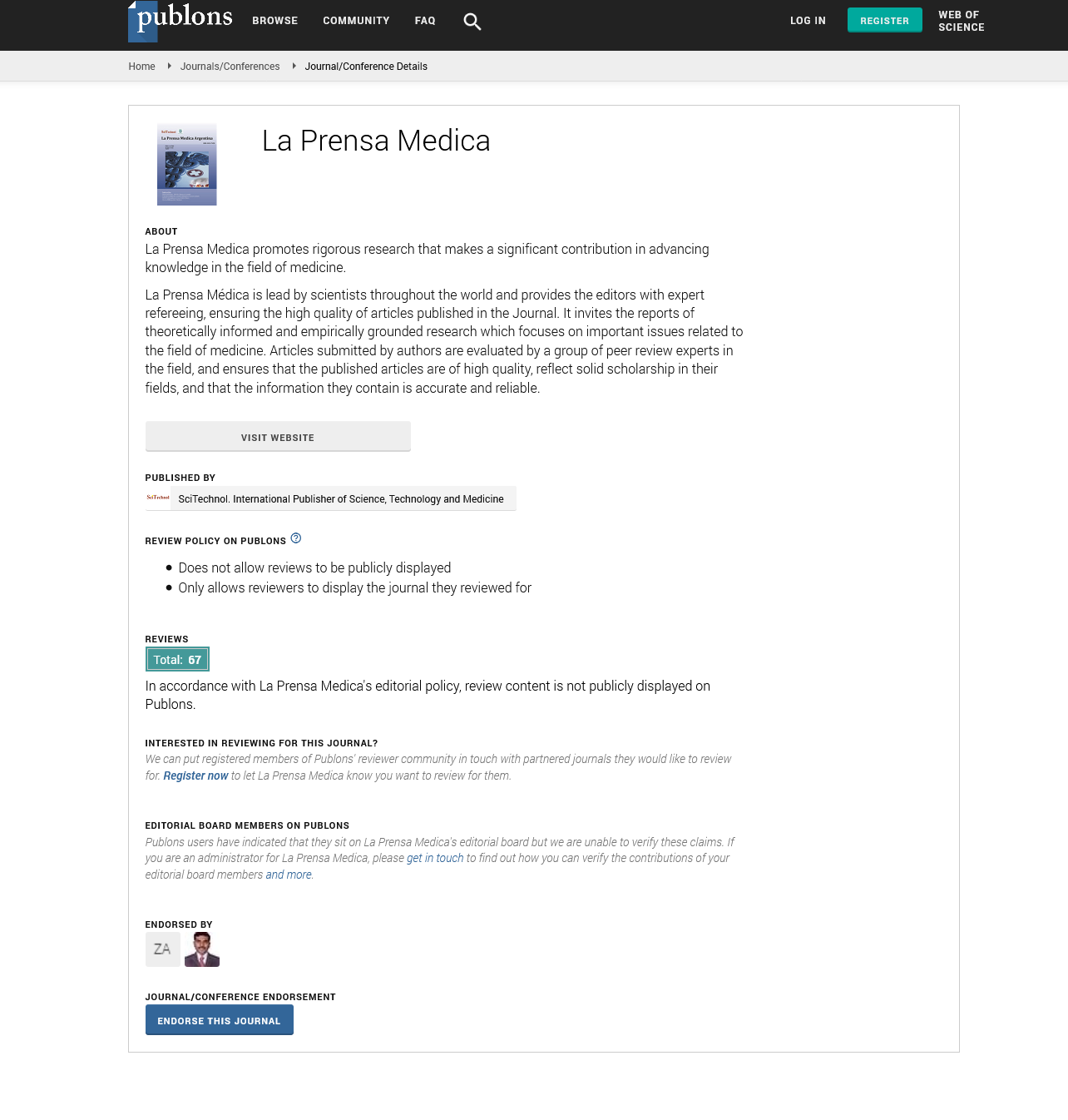Opinion Article, La Prensa Medica Vol: 109 Issue: 1
Nanomedicine: Pioneering Precision in Cancer Therapy
Olivr Weirt*
1Department of Intramural Research, National Institutes of Health, Bethesda, USA
*Corresponding Author: Olivr Weirt,
Department of Intramural Research, National
Institutes of Health, Bethesda, USA
E-mail: weirto@hotmail.com
Received date: 28 March, 2023, Manuscript No. LPMA-23-100450;
Editor assigned date: 31 March, 2023, PreQC No. LPMA-23-100450 (PQ);
Reviewed date: 14 April, 2023, QC No. LPMA-23-100450;
Revised date: 21 April, 2023, Manuscript No. LPMA-23-100450 (R);
Published date: 28 April, 2023, DOI: 10.4172/0032-745X.1000148
Citation: Weirt O (2023) Nanomedicine: Pioneering Precision in Cancer Therapy. La Prensa Medica 109:1.
Description
One of the most formidable threats to human health, cancer has claimed millions of lives around the world. For decades, researchers have been trying to find effective treatments and cures. Nanotechnology has become a tool in the fight against cancer in recent years. With its capacity to control matter at the nuclear and sub-atomic scale, nanotechnology offers new open doors for designated drug conveyance, early identification, and exact conclusion. This paper investigates the capability of nanotechnology as a pivotal way to deal with restoring malignant growth.
The lack of specificity of conventional cancer treatments like chemotherapy is one of their major drawbacks. It is common for conventional drugs to have severe side effects because they affect both cancerous and healthy cells. By enabling the exclusive targeting of cancer cells, nanotechnology has revolutionized drug delivery. It is possible to engineer nanoparticles to carry drugs and release them only when they reach the tumor site. By adjusting the surface properties of nanoparticles, researchers can upgrade their aggregation in carcinogenic tissues while staying away from sound cells. In addition, nanocarrier can be outfitted with ligands that specifically recognize and bind to cancer cell-specific receptors that are overexpressed. This method of delivering drugs specifically improves patient outcomes, reduces systemic toxicity, and increases treatment efficacy.
Improved survival rates and successful treatment depend on early cancer detection. Nanotechnology surpasses conventional screening methods with novel approaches to early cancer diagnosis. Diagnostic probes made of nanoparticles can be extremely specific and sensitive. For example, gold nanoparticles can be functionalized with explicit antibodies that tight spot to malignant growth biomarkers, empowering the discovery of disease cells or proteins at extremely low focuses. Additionally, cancer-related molecular changes can be detected using nano sensors. To improve the sensitivity and accuracy of cancer diagnosis, these sensors can be incorporated into imaging procedures like Positron Emission Tomography (PET) or Magnetic Resonance Imaging (MRI). Nanotechnology-based diagnostics empower early location, prompting convenient intercession and expanded possibilities of fruitful treatment.
Theranostics, which combine therapy and diagnostics into a single system, is made possible by nanotechnology. The targeted delivery of therapeutic agents and simultaneous monitoring of treatment response are made possible by this strategy. Clinicians can monitor the distribution of drugs and evaluate their efficacy in real time by incorporating diagnostic components like imaging agents or sensors into nanocarrier.
Additionally, theranostics nanoparticles can be programmed to respond to particular stimuli, such as changes in pH or temperature, allowing for controlled drug release at the site of the tumor. Treatment precision is improved, side effects are reduced, and patient outcomes are improved when therapy and diagnostics are used together. Nanotechnology-based theranostics hold extraordinary commitment for customized medication, where medicines can be custom-made to individual patients in light of their remarkable atomic profiles.
Although nanotechnology presents remarkable opportunities for cancer treatment, there are numerous obstacles that must be overcome. Nanomaterials' biocompatibility and long-term safety are major concerns. Broad examination is expected to assess the possible poisonousness and freedom of nanoparticles from the body. In addition, nanotechnology-based strategies must be made more costeffective and scalable in order to gain widespread acceptance. To address these issues and ensure the application of nanotechnology in clinical settings, researchers, clinicians, and regulatory agencies must work together.
Nanotechnology has arisen as an extraordinary device in the battle against disease, offering new roads for designated drug conveyance, early discovery, and exact conclusion. Researchers are coming up with novel approaches to increase treatment success rates and patient survival rates by making use of the distinctive properties of nanoparticles. For personalized cancer treatment, nanotechnology's capacity to combine therapy and diagnostics into a single system holds great efficacy. Even though there are still obstacles to overcome, there is a good chance that ongoing research and development in this area will result in breakthroughs that will fundamentally alter the treatment of cancer and bring us one step closer to finding a cure. In the fight against cancer, nanotechnology is unquestionably an exciting new frontier that offers hope to millions of patients worldwide.
 Spanish
Spanish  Chinese
Chinese  Russian
Russian  German
German  French
French  Japanese
Japanese  Portuguese
Portuguese  Hindi
Hindi 

